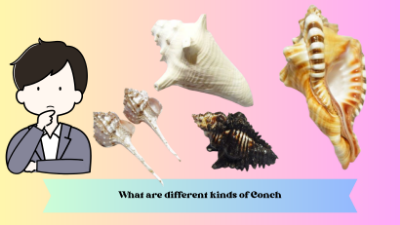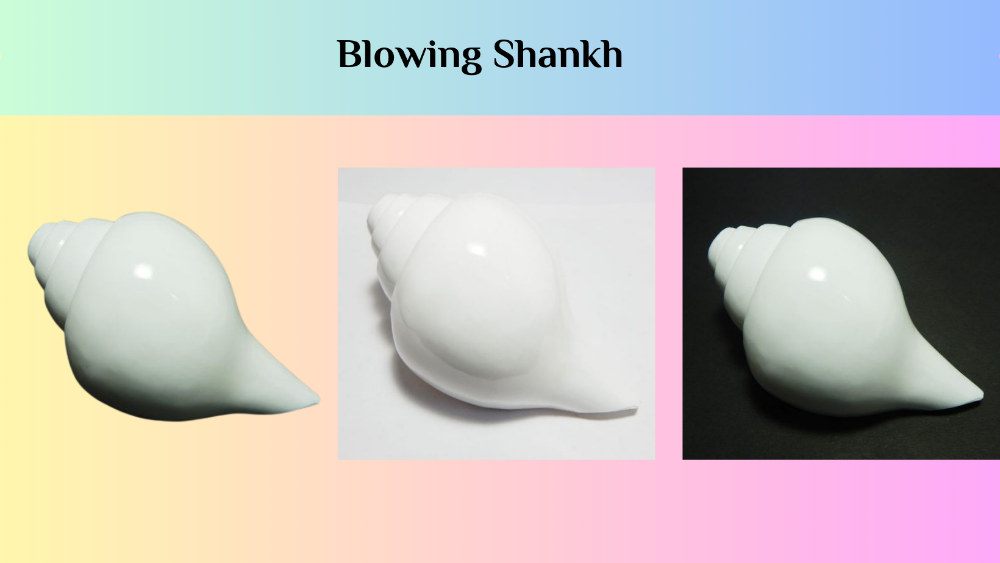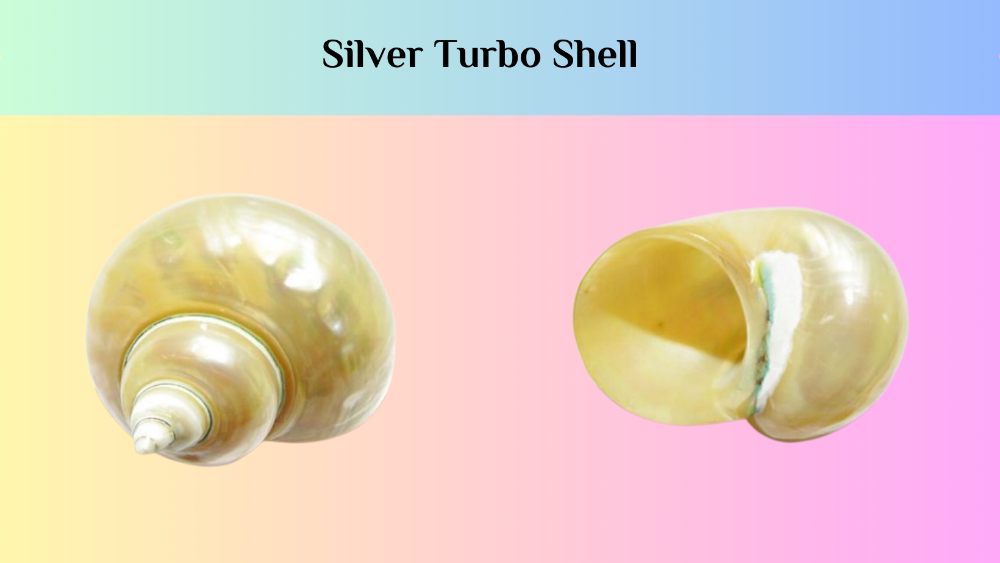
Conch shells, also known as Shankha in Sanskrit, hold special significance in various cultural and spiritual traditions, including Hinduism and Buddhism. They are believed to carry spiritual energy and are often used for rituals, meditation, and healing practices. In the context of Vaastu (Vastu Shastra) and healing, different types of conch shells are associated with specific benefits. Here are some examples:
Dakshinavarti Shankha: This conch shell spirals to the right when held with the spout facing upwards. It is considered highly auspicious in Hinduism and is associated with the goddess Lakshmi, the deity of wealth and prosperity. Dakshinavarti Shankha is believed to bring positive energy and financial abundance. It is often used in Vaastu practices to attract wealth and harmony to a space.
Vamavarti Shankha: Unlike the Dakshinavarti Shankha, the Vamavarti Shankha spirals to the left when held with the spout facing upwards. It is believed to be associated with Lord Vishnu and is used to ward off negative energies. This type of conch is sometimes used for healing practices and for purifying the environment.
Ganesha Shankha: This conch shell is characterized by its unique shape resembling the face of Lord Ganesha. It is considered to be a symbol of auspiciousness and is associated with removing obstacles and bringing blessings. Ganesha Shankha is often used in both Vaastu and healing to invoke positive energies and create a harmonious atmosphere.
Shankhachuda Shankha: This conch shell has a sharp, pointed spout. It is believed to possess strong protective energies and is associated with Lord Krishna. Shankhachuda Shankha is sometimes used for Vaastu purposes to ward off negative influences and enhance positive vibrations.
Pearl Conch (Moti Shankha): This type of conch shell resembles a pearl and is often used for healing purposes. It is believed to have a cooling and calming effect on the mind and body. The gentle sound produced by blowing into a Pearl Conch is said to have therapeutic properties, promoting relaxation and reducing stress.
When using conch shells for Vaastu and healing purposes, it's important to approach their use with respect and understanding of their cultural and spiritual significance. Here are some general guidelines:
Placement: Conch shells can be strategically placed in different areas of a space to enhance specific energies. For example, placing a Dakshinavarti Shankha in the wealth corner of a room is believed to attract prosperity.
Sound Healing: The sound produced by blowing into a conch shell is considered spiritually uplifting and purifying. It can be used in healing practices to clear negative energy and promote positive vibrations.
Meditation: Meditating with a conch shell, either by holding it or focusing on its image, can help align and balance energy centers (chakras) and promote a sense of tranquility.
Intent and Faith: The effectiveness of using conch shells for Vaastu and healing purposes often depends on one's intention, faith, and belief in their spiritual properties.
It's recommended to seek guidance from knowledgeable sources or practitioners when incorporating conch shells into Vaastu or healing practices to ensure respectful and accurate use.
What are different types of Conch for healing purposes
Conch shells have been used for healing purposes in various cultures, primarily due to their natural shape, sound, and symbolism. Different types of conch shells may be used for healing, and their specific purposes can vary across traditions. Here are some types of conch shells and their potential healing associations:
1. Shankha Conch (Turbinella pyrum):
- Also known as the sacred chank, this conch shell is highly revered in Hinduism. It is often used as a trumpet in Hindu rituals and ceremonies. Shankha is believed to represent the sound of the divine and is associated with purification, protection, and the removal of negative energies.
2. Queen Conch (Strombus gigas):
- This large conch shell, found in the Caribbean and Florida, is sometimes used in healing practices, particularly in the Caribbean region. It is believed to have energy-clearing properties and is used in rituals to cleanse and purify a person's energy field.
3. Triton's Trumpet Shell (Charonia tritonis):
- Triton's trumpet shells are large and spiral-shaped. They are sometimes used as a tool for sound healing due to their resonant properties. When played like a trumpet, they produce deep, soothing sounds that are thought to have healing effects on the mind and body.
4. Horse Conch (Pleuroploca gigantea):
- This is one of the largest sea snail shells and can be used in healing rituals, especially in the context of ocean-based spirituality. It is believed to carry the energy of the sea and can be used for cleansing and balancing energy.
5. Melo Melo Snail Shell (Melo melo):
- The melo melo snail shell is often used in Buddhist and Taoist practices for meditation and healing. It is believed to have calming and grounding properties, making it suitable for meditation and relaxation techniques.
6. Conus Shells (Various Species):
- Some Conus shell species are associated with healing and protection in certain indigenous cultures. They may be used in rituals to ward off negative energy or as talismans for healing purposes.
It's essential to note that the specific uses and beliefs surrounding these conch shells can vary widely depending on the cultural or spiritual tradition. Additionally, the healing properties attributed to these shells are often based on tradition and belief rather than scientific evidence. If you are interested in using conch shells for healing purposes, it's advisable to seek guidance from experienced practitioners or healers who are knowledgeable about the specific traditions and practices associated with them.
Top 5 High Quality Conch & Shells at our store
Good quality Blowing Shankh

Size : 8 x 12 inches
Weight : 700 gms
Hinduism: The Blowing Shankh is closely connected to Lord Vishnu and is regarded as a sacred symbol in Hinduism. It is frequently shown in the hands of gods, especially Lord Vishnu and his incarnations, such as Lord Krishna. Blowing the Shankh is thought to bring good vibes, cleanse the surroundings, and foster an auspicious feeling.
Religious Ceremonies: In Hindu temples and households, the Shankh plays a crucial role in religious rites and ceremonies. It is used for a number of religious ceremonies, such as puja (ritual worship), abhishekam (ritual bathing of deities), and aarti (ceremonial worship). Blowing the Shankh is said to drive out evil spirits and call in blessings from above.
Yoga and Meditation: The Shankh's resonant sound is thought to be relaxing and comforting. It is frequently used as a musical instrument during chanting, yoga, and meditation sessions. The sound is thought to aid in mental concentration, the development of a meditative atmosphere, and the enhancement of spiritual experiences.
Festivals and Celebrations: One of the main components of many Hindu holidays and festivities is the blowing of the Shankh. It is blown at religious festivals like Navaratri and Diwali, as well as at auspicious events like weddings and processions. It is said that the sound of the Shankh heralds the coming of divinity and extends an invitation for divine favors.
Symbolism: According to Hindu mythology, the Shankh is symbolic of the cosmic vibration and primordial sound from which the universe originated. It stands for the universe's formation, preservation, and disintegration. Blowing the Shankh is also thought to facilitate communication with cosmic energy and awaken the divine consciousness within oneself.
Silver Turbo Shell

Size : 12cm approx
Sold By Pc
In certain cultures and traditions, the silver Turbo shell, also called Turbo marmoratus, is thought to possess fortunate qualities and is linked to wealth and success.
The silver Turbo shell is regarded as a lucky charm and symbol of plenty in some cultures. Keeping a silver Turbo shell at home is thought to draw prosperity, wealth, and good vibes into the home.
The silver Turbo shell is connected to the element of Water and is thought to hold the energy of the sea in Feng Shui, a Chinese philosophical system that aims to balance people with their surroundings. It is said that placing a silver Turbo shell near the front door or in the wealth corner of the house will draw prosperity and improve luck with money.
The silver Turbo shell is prized for its aesthetic appeal and is frequently used as a decorative item in addition to its supposed auspiciousness. It can be used as a decorative piece or luck charm in residences, workplaces, or commercial spaces.
Dakshinavarti Shankh (Conch)
_1000.png)
Size : 7.5 X 4 inches
Weight : 450 gms
A unique and revered conch shell with particular meaning in Hinduism and other spiritual traditions is the Dakshinavarti Shankh.
The Hindu goddess of riches, prosperity, and plenty, Goddess Lakshmi, is thought to be connected to the Dakshinavarti Shankh. It is regarded as an auspicious symbol that bestows blessings and prosperity upon the one who worships it.
Blowing the Dakshinavarti Shankh is thought to bring prosperity, success, and good fortune into one's life as well as the blessings of the goddess Lakshmi. It is thought to raise the good energy and vibrations in the surroundings and is frequently used in rituals, ceremonies, and prayers devoted to Goddess Lakshmi.
It's also thought that the Dakshinavarti Shankh has spiritual and protective qualities. It is believed to fend off bad vibes, demonic spirits, and malicious influences. It is thought that keeping a Dakshinavarti Shankh in a house of worship or at home creates a holy and peaceful atmosphere that is beneficial to spiritual development and wellbeing.
Ganesha Shankh (Conch)
_1000.png)
Size : 4.5 inches
Weight : 80 gms
Ganesha Shankh is regarded as a very fortunate day. It ought to be stored in money lockers, your office, your house, or your puja room.
Every Puja anushthan begins with the worship of Ganesha Shankh. It is said to eliminate the negative effects of Planet Rahu and block obstacles in the way of achievement. Worshippers gain success, luck, and wisdom from it.
Annapurna Shankh (Conch)
 (1)_1000.png)
Size : 6 inches approx
In the Hindu goddess of abundance and nourishment, Annapurna Devi, Annapurna Shankh is significant in her puja (worship).
Particularly, the worship of Annapurna Devi is linked to the Annapurna Shankh. The goddess Annapurna Devi is worshipped for giving food as sustenance and nourishment. It is said that keeping the Annapurna Shankh at the site of the puja will bring the goddess' blessings and ask for her divine grace.
It is thought that worshiping the Annapurna Shankh will bring wealth and prosperity to the individual. It is thought to draw blessings in the form of food, nourishment, and financial security. It is said that keeping the Shankh at the location of the puja creates a holy atmosphere and calls in the goddess' blessings for a prosperous life.
The Annapurna Shankh is frequently used to offer grains, wheat, and other food items to the goddess Annapurna Devi during her puja. This gesture expresses thanks to the goddess for her provision of nourishment and asks for her ongoing favors of plenty and sustenance.
The spiritual significance of the Annapurna Shankh is another reason for its value. It's thought to heighten ambient spiritual vibrations and foster a feeling of divine presence. It is thought that keeping the Shankh at the location of the puja will promote a strong bond with Annapurna Devi and promote spiritual development and wellbeing.
How to find real Conch and how to use them in the right way
Finding a real conch shell and using it in the right way can be an interesting and culturally significant endeavor. Conch shells are often used in various spiritual, religious, and cultural practices, especially in regions like the Caribbean, India, and Southeast Asia. Here are some steps to help you find a real conch shell and use it appropriately:
1. Identify the Type of Conch Shell:
- There are various types of conch shells, with the most common being the queen conch (scientifically known as Strombus gigas). Make sure you can identify the type you are looking for, as some may be more appropriate for specific purposes than others.
2. Legal Considerations:
- Before acquiring a conch shell, check local and international regulations regarding their collection and trade. Some species of conch are protected due to overharvesting and may not be legally obtainable.
3. Ethical Sourcing:
- Whenever possible, choose shells that have been ethically sourced. This means they were obtained without harming the living creature or its environment. Be cautious about purchasing shells from areas with questionable environmental practices.
4. Purchase from Reputable Sellers:
- If you're not collecting the shell yourself, buy from reputable sellers, such as art supply stores, shell shops, or online retailers specializing in seashells. Ensure they adhere to ethical and legal standards.
5. Cleaning and Preparation:
- If you acquire a conch shell that hasn't been cleaned, you may need to clean and prepare it. Remove any organic material inside the shell and wash it thoroughly with water. To disinfect it, you might also use a weak bleach solution.
6. Cultural and Spiritual Uses:
- The use of conch shells varies across cultures and spiritual practices. Here are some common uses:
- Musical Instrument: Conch shells are often used as musical instruments in ceremonies and rituals. To play it, blow gently into the opening, creating a resonant sound.
- Religious and Spiritual Symbols: Conch shells are sometimes used as religious symbols or ritual objects in various traditions. They may be used to invoke positive energies, blessings, or protection.
- Decorative and Artistic Purposes: Conch shells can also be used for decorative and artistic purposes, such as carving, painting, or as display pieces in your home.
7. Respect and Tradition:
- When using a conch shell in a cultural or spiritual context, ensure that you do so with respect and in accordance with the traditions and beliefs associated with it. Seek guidance or teachings from knowledgeable practitioners if necessary.
Remember that the use of conch shells can be highly specific to certain traditions, so it's important to research and approach their use with cultural sensitivity and respect for the significance they hold in various cultures and religions.




